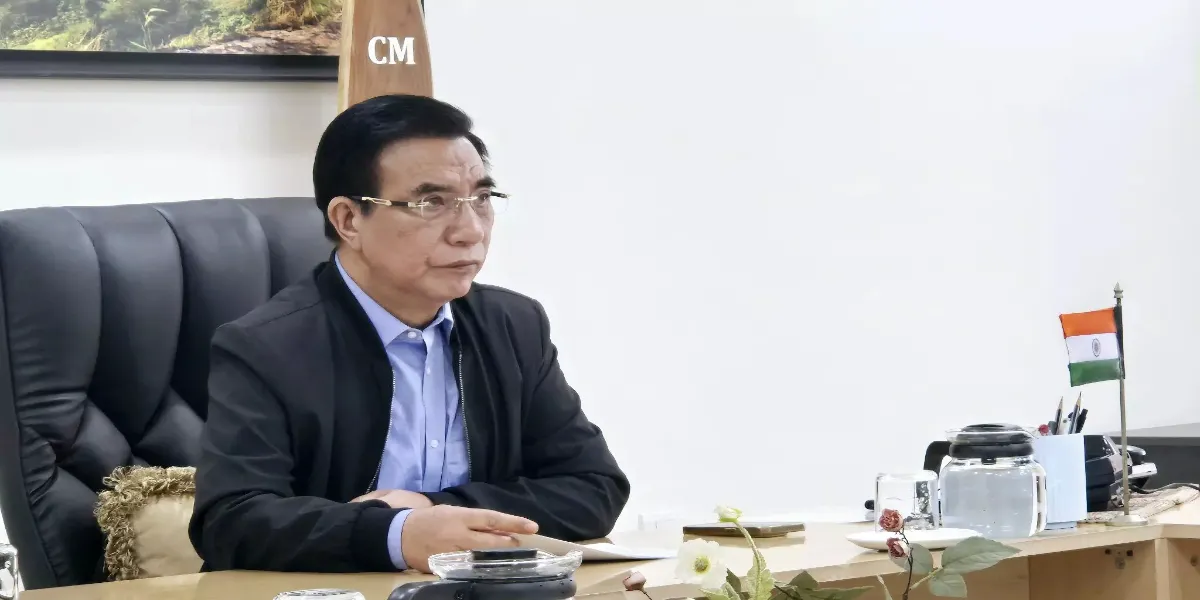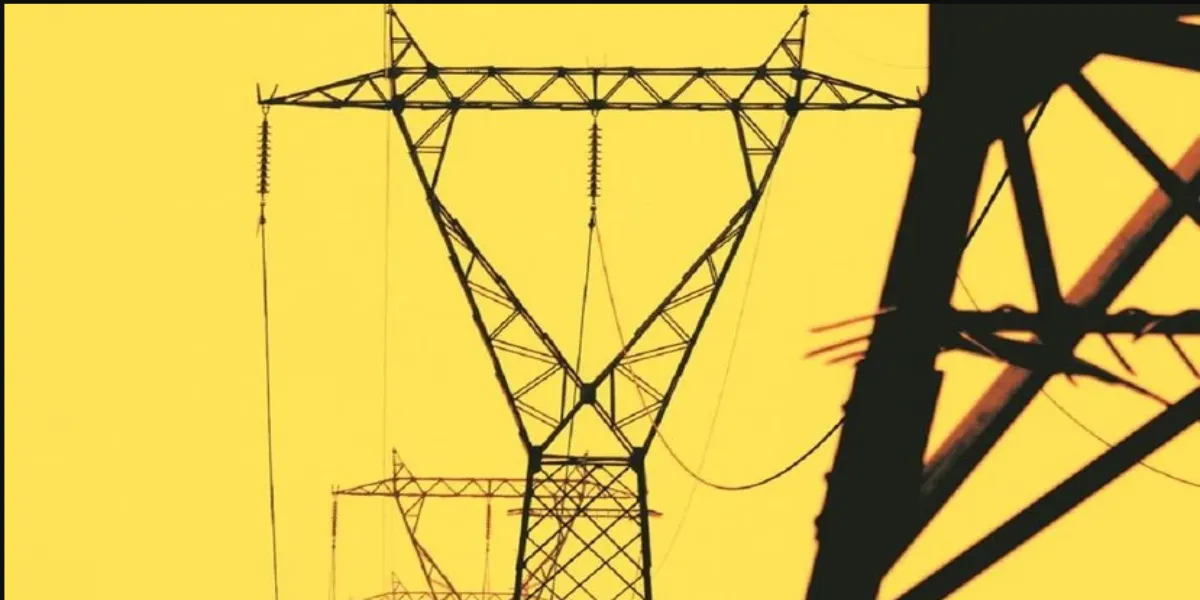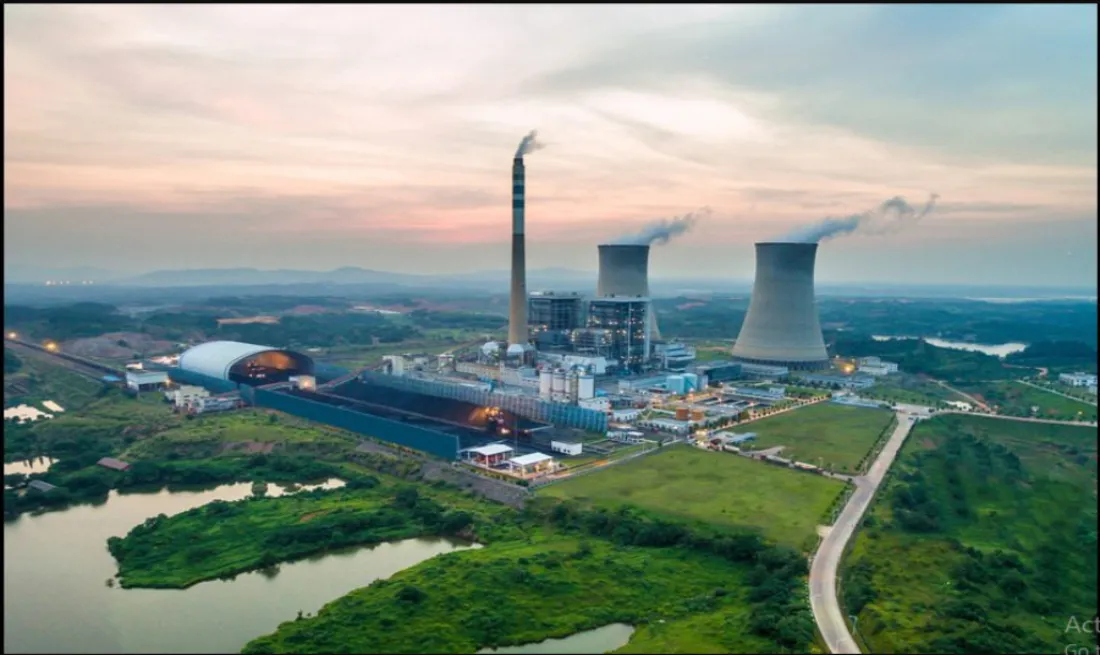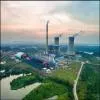- Home
- Building Material
- Steel
- Round Table
Round Table
What constitutes greening? When we talk about green buildings, what exactly do we refer to? Has construction and architectural design in India today accepted and adopted green norms and practices? Here are some perspectives that emerged at the CW Round Table.
Greening, environment and ecology are society centric issues that need to be addressed immediately. Is Indian legislation adequate to meet this requirement or is there a need to consider international standards that can be customised for the Indian scenario? Are consumers or customers commercial and residential willing to incur the additional initial cost involved in going green, considering that in the long term there will be value for money? In 2001, CII propagated the green building movement. Today, the country has progressed from 20,000 sq ft of green built up area to a green building footprint of 704 million sq ft. This is phenomenal when compared to the fact that the US has only 1,363 million sq ft. The CONSTRUCTION WORLD Round Table, held on June 10, 2011, at The Intercontinental in Mumbai, brought together leaders from the construction and architecture sectors to express their interpretations on ‘green’, with Atul Tandan, Chairman, ASAPP Media Information Group.
As SHRIYAL SETHUMADHAVAN recounts, the result was an intriguing mix of experiences, recommendations and opinions on the burgeoning concept of green in India.
“Recent developments in the real estate industry in India have changed the concept of green being just a colour. In our own project in Powai, we started developing 250 acre with only 20 trees; today, we have 4 lakh fully grown trees that are over 40 ft tall. Also, sewerage recycling plants, rainwater harvesting and horticulture are part of our practices. Further, we have two Platinum-certified commercial buildings in Powai BG House and Crisil and the customers, on being coached, monitored these more than or as much as we did for the purpose of the LEED rating and have continued to do so. But what we do not see in the present day is the city-level response to what we do. For example, the city of Mumbai treats sewerage but it is all dumped after partial or full treatment into the sea and not a single drop is recycled. Also, there is lack of education and awareness about the various aspects of greening.”- Niranjan Hiranandani, Managing Director, Hiranandani Construction
“Green is an attitude and it is an intuitive attitude in rural India. When you come towards urban India, this attitude of leaning towards green is seen in children as well. So there will be huge demand wherein we are building a bulkhead of concern in the psyche of the end user that green is important. As professionals, we are obliged to meet market demands for green projects. Another positive fact is that tenants are also adopting these principles. So we have a positive attitude coming from consumers and, as professionals within the industry, we are all gearing up to meet that demand.”
- Arunjot S Bhalla, Director - Design, RSP Architects, Planners and Engineers
“To me, more than colour, ‘green’ is attitude. Natural resources are being utilised insensitively; it’s important to rethink before they eventually become scarce. Recycling and reusing have to become a part of life. Only those who have this attitude will contribute to the green business.”- Satish Jamdar, Managing Director, Blue Star
“There should be a technique to measure the total amount of building materials consumed in a building. One talks about heat load reductions, lighting, air-conditioning, etc, but what about the energy consumed to make building materials like steel and cement? This measuring, if done, could lead to improved structural design, especially in the case of mass housing. Also, technology is changing globally. Using nanotechnology, a Japanese company has worked on glass buildings that cut down the entire heat that enters them. Further, the use of reflective coatings on roofs is very popular in America and many other countries as it cuts down on UV rays substantially. Along with this adoption of technologies, the amount of energy that goes into every square foot of building construction is another aspect.” - Sanjay Bahadur, CEO - Global Construction Chemicals, Pidilite Industries Ltd
“Conceptually, going green is a great idea, but it needs to be adopted by a wider industry to gain momentum. For example, the Bureau of Energy Efficiency (BEE) standard when initiated was just a good idea. It took about 10 years for it to be followed and today people demand equipment that is ‘5-star’ rated. So for a concept like green to be taken to a wider platform, it needs to be embraced by all members.” - Vikram Amin, Executive Director - Strategy & Specific Business Development, Essar Steel Business
“I would like to share two different perspectives with reference to legislature and marketing. One of our main achievements was about four years ago, when energy efficiency was not mandatory. We took a conscious call not just to introduce energy-efficient air conditioners but propagate them too. This also made business sense and became our USP. Although we spent a lot on advertising, we were able to charge higher prices and increase our market share to get a payback. I feel developers should follow this principle because they will get a payback within three years; it’s just a matter of time. Again, legislation is bound to come and with a set pattern. Initially, green will be practised by the top and socially responsible companies. Then, there will be a council, after which the government will take an initiative. It is bound to happen this way and I think that those who opt for LEED will be the first movers rather than the ones waiting to do it.”- Sanjay Johri, Managing Director, Voltas Ltd
“We originate out of Germany and for us the concept of sustainability marks its beginning in the 1970s and 80s in Europe. Today, the employees of our site in Germany reside in houses that are designed green. According to the concept, we called them ‘7 litre’ houses, ‘3 litre’ houses and today it is ‘0 litre’ houses, which means we have houses that are net zero. They produce and consume electricity, but overall it is zero. If this is practiced in India, ‘green’ would not just be a colour
but a reality - Upen Patel, Business Director - Construction Chemicals, BASF India Ltd
“I feel that green is still just a colour, just a ripple on the surface of water. The progress in the past three to four years has happened despite the government and in absence of any facilitation. We just require balanced legislations. Also, through the renovation of a 75 year-old building, we proved that even an old building can be made green. That we were certified Gold is just an additional achievement. Of course, there was extra cost involved; instead of 5-8 per cent, we spent 20 per cent extra but we foresee a payback within six years.”- Sumit Banerjee, Vice Chairman, Reliance Cementation
“Today, we have almost 1,120 buildings registered under the IGBC, constituting almost 95 percent of national initiatives. People are opting for the concept because it makes good business sense. The incremental cost for a Platinum-certified building compared to a conventional building is about 5-8 percent, and the payback is within three to five years. These are achieved by just saving energy. Also, water consumption is being reduced to up to 50 per cent. In fact, about 20 to 30 organisations, mostly IT companies, have made building green a standard policy. The fundamental driver is the mixed space that a green building offers. A combination of natural light, excellent view and good ventilation standards makes a green building unique and comfortable. Compared to developed countries where the penetration rate is about 5 to 7 per cent, in India it is about 3 to 5 percent; yet a lot needs to be done. Another challenge is cost, but we strongly believe that by 2015 the incremental cost will reduce to 2 to 3 per cent compared to a conventional building. When we talk about legislation, we may assume that every building is a green building. I have compared international and Indian standards, and there is a very significant difference in the behavioural patterns of developed countries versus a developing country like ours. In a developed country, a good item is identified; it becomes a standard and is followed vigorously. But, in a developing country, only a set of people will follow all these standards, while 70 to 80 percent will not. If made manda-tory, it is likely that some people will accept it, some will bypass the system and what is claimed to be a green building will not remain one.”- S Raghupathy, Executive Director, CII - Sohrabji Godrej Green Business Centre
“The concept of green is niche. The lifecycle cost of any green building or movement will, in the long term, work as an advantage to the person implementing it. Not only are we conserving water and electricity but also contributing to the environment as 40 per cent of energy is consumed by buildings in some way or the other and 24 percent of carbon dioxide is emitted. Green is also practiced in reducing the number of truckloads carrying material to site, contributing to the speed of construction.With regard to ratings, the common man does not buy any electronic item or even a car without first considering its rating. The day is not far away when people will buy or rent buildings on the basis of these ratings.”
- Anupam Sharma,Chief Executive Officer, Doka India Pvt Ltd
“In Germany we do not talk much about green, we just do it. Being green and environment-friendly has to come naturally. When I compare the situation in India today to a few years ago, there are many people now who are seriously concerned about being environment friendly. But it’s also become a bit of a fashion and fad where many people want to advertise with what is today known as being green. We were all not born environmentally conscious in Germany either and I must compliment this country as I am surprised to see how the concept has taken root over the past three years. Green is becoming more of an issue; people are getting more involved and more architects are making it part of their design philosophy. I think this is the key.”- Juergen Wolf, Managing Director,Häfele India
“To me the colour green represents fertility and life. Today, we are striving to conform to a regulation, and we do so in response to external stimulation. But, such concepts will not take off unless it comes from within. We need to think green and feel green, only then can we push green forward as a nation.”- MS Nair, Country Manager - Bathroom & Wellness Division, Villeroy & Boch Sales India
“People, including most of us, might unknowingly adopt green measures to save money. Some time ago, a friend and I bought a plot in Alibaug and asked the architect for an open, undivided space with a lot of light; today, we do not even need to turn on the fan. In return, we were benefitted greatly in terms of costs and were also contributing to the economy by saving power. Again, without realising that I was contributing more to the environment than saving my own money, I invested in a solar light. We initially did not opt for rainwater harvesting but soon learnt our lesson when the bore wells dried out and quickly went in for the concept. We have now also installed our own waste recycling system and are taking pressure off the village infrastructure. Today, corporate companies are placing emphasis on green. Any initiative they take is influenced by whether a building complies with green norms. And they are willing to pay a higher price. I would not recommend legislation because it becomes another tool in the hand of the babus for harassment so I would personally opt for self-regulation.”- Pranab Datta, Vice-Chairman & MD, Knight Frank (India) Pvt Ltd
“Over the past few years, a larger number of clients have told us that they do not mind paying that extra rupee or two for the lease if the building is green and is Gold or Platinum rated. This signifies a drastic change in the psyche of the consumer. Three to four years ago, clients were more worried about whether the concept of green was quantifiable and if so how much they would save.”- Thirumal Govindraj, Executive Director, CB Richard Ellis
“Almost 90 percent of the buildings we glaze today are green buildings; and this is a drastic change from the scenario five years ago. Then, people were not aware of the concept of green construction. Also, other green responsibilities like rainwater harvesting were left to builders to initiate. However, today, this is not the case. I feel we are moving in a positive direction and as a country have a great future ahead.”- Pankaj Keswani, Managing Director, Alufit (India) Pvt Ltd
“There is a vast difference between doing works in the suburbs and carrying out the same in cities. For environment permissions, one has to ensure recycling of water, sewage treatment plant, rainwater harvesting, energy conservation, space for greenery, and so on. Even if you don’t have the space, at the designing stage itself, you have to comply with all environment conditions. People are conscious about the same and hence while commencing work, we first call the agencies stating that we want to register for LEED and need guidance on the criteria."- Kishore Avarsekar, CMD, Unity Infraprojects Ltd
“Glass is a major contributor to green initiatives. It is 100 per cent recyclable and hence eco-friendly. There is no legislation in India that makes green initiatives compulsory, and I strongly believe that we, along with the government, should introduce legislation to ensure every building in India necessarily follows some concept of greening. Similar legislations to those in European and other developing countries must be adopted. This is not just for the betterment of our future but the future generations as well.”- KC Jain, President, HNG Float Glass Ltd
“Before the Indian Green Building Council (IGBC) was formed, buildings were developed with low capital cost, were not always energy efficient and lacked incentives to adopt energy-efficient schemes. Today, ‘green’ is definitely a movement. In terms of legislation, the government brings in so many modules to the legislation that the whole intended purpose diminishes. A body like IGBC is important as it is independent and lists regulations that everyone respects.- Khurshed Daruvala, Managing Director, Sterling and Wilson
“Green is definitely an attitude and we as Indians need to make amends in our attitudes to bring about a change in the current scenario. I was working with a public-sector company down south on a 3,000 acre township of 6,000 houses and 10 schools with around 12,000-13,000 children. These children were involved in planting saplings in the campus area and gradually, over the years, we had almost 2 million healthy trees! Again, there was a time when water for the township was being pumped from over a distance of 14 km; within two years, this factory became a zero discharge factory, with the power bill coming down from Rs 4.5 crore per year to Rs 2 crore per year. Just 1 per cent of improvement in the efficiency of our power plants saved several million tonne of in-house gases, and this would not have been possible without a change in the attitudes of both our employees and children.”- AK Mathur, Executive Director, Tata Projects
“Mumbai consumes around 3,800 million litre of water per day, and it is a task to treat that much water! However, green initiatives were taken as far back as the early 1980s, when the World Bank had concluded that water treatment was almost impossible for the kind of sewerage effluent a city like Mumbai generates. Ultimately, they provided Mumbai’s sewerage effluent with partial treatment. Another context is climate-oriented technology. Countries like the US and Europe need different standards to maintain the climate within a building at a comfortable humidity level, which is why they require glass panel cladding. But, India is a tropical country with a balanced climate. Why then can we not draw on natural light? This is a question we must ask ourselves if we are looking at the concept of green so closely.”- Satish C Dhupelia, Consulting Structural and Civil Engineer and PM Consultant
In conclusion
Indeed, there has been a conscious attempt in the past two to three years to assimilate green initiatives within new constructions.Atul Tandan concluded with some basic statistics: “Given the green building footprint that India has achieved today, and, with the number of dwellings in the country, you know how much more effort will be required to make it grow.” In the context of there being a greater emphasis on resource efficiency, he mentioned how India has made a tremendous attempt in creating and us-ing environment-friendly paints and also spoke of the contribution of glass to many structures. “To me, it goes beyond effluent treatment, water harvesting, planting trees, and so on. Today, there is consciousness about the use of construction materials like paint, cement and steel. Companies have recently introduced many eco-friendly products that are lead-, mercury- and chromium-free and easily washable.”
The round table concluded with most participants agreeing that besides being just a colour, ‘green’ is also an attitude, and to sustain it, education and awareness is an immediate requirement. On legislation, there is an independent body the Indian Green Building Council but there needs to be an association for green or eco-friendly initiatives.This can be supported by all leading industry associations along with the Ministry of Environment and Forests. And now, given the government’s recent proposal to establish an independent regulator - the National Environment Appraisal and Monitoring Authority the nation’s industrialisation and economic growth seems to be moving in the right direction, paving the way for green policies to be effectively translated into practice.
Is ‘Green’ Just a Colour?What constitutes greening? When we talk about green buildings, what exactly do we refer to? Has construction and architectural design in India today accepted and adopted green norms and practices? Here are some perspectives that emerged at the CW Round Table.Greening, environment and ecology are society centric issues that need to be addressed immediately. Is Indian legislation adequate to meet this requirement or is there a need to consider international standards that can be customised for the Indian scenario? Are consumers or customers commercial and residential willing to incur the additional initial cost involved in going green, considering that in the long term there will be value for money? In 2001, CII propagated the green building movement. Today, the country has progressed from 20,000 sq ft of green built up area to a green building footprint of 704 million sq ft. This is phenomenal when compared to the fact that the US has only 1,363 million sq ft. The CONSTRUCTION WORLD Round Table, held on June 10, 2011, at The Intercontinental in Mumbai, brought together leaders from the construction and architecture sectors to express their interpretations on ‘green’, with Atul Tandan, Chairman, ASAPP Media Information Group. As SHRIYAL SETHUMADHAVAN recounts, the result was an intriguing mix of experiences, recommendations and opinions on the burgeoning concept of green in India. “Recent developments in the real estate industry in India have changed the concept of green being just a colour. In our own project in Powai, we started developing 250 acre with only 20 trees; today, we have 4 lakh fully grown trees that are over 40 ft tall. Also, sewerage recycling plants, rainwater harvesting and horticulture are part of our practices. Further, we have two Platinum-certified commercial buildings in Powai BG House and Crisil and the customers, on being coached, monitored these more than or as much as we did for the purpose of the LEED rating and have continued to do so. But what we do not see in the present day is the city-level response to what we do. For example, the city of Mumbai treats sewerage but it is all dumped after partial or full treatment into the sea and not a single drop is recycled. Also, there is lack of education and awareness about the various aspects of greening.”- Niranjan Hiranandani, Managing Director, Hiranandani Construction“Green is an attitude and it is an intuitive attitude in rural India. When you come towards urban India, this attitude of leaning towards green is seen in children as well. So there will be huge demand wherein we are building a bulkhead of concern in the psyche of the end user that green is important. As professionals, we are obliged to meet market demands for green projects. Another positive fact is that tenants are also adopting these principles. So we have a positive attitude coming from consumers and, as professionals within the industry, we are all gearing up to meet that demand.” - Arunjot S Bhalla, Director - Design, RSP Architects, Planners and Engineers“To me, more than colour, ‘green’ is attitude. Natural resources are being utilised insensitively; it’s important to rethink before they eventually become scarce. Recycling and reusing have to become a part of life. Only those who have this attitude will contribute to the green business.”- Satish Jamdar, Managing Director, Blue Star“There should be a technique to measure the total amount of building materials consumed in a building. One talks about heat load reductions, lighting, air-conditioning, etc, but what about the energy consumed to make building materials like steel and cement? This measuring, if done, could lead to improved structural design, especially in the case of mass housing. Also, technology is changing globally. Using nanotechnology, a Japanese company has worked on glass buildings that cut down the entire heat that enters them. Further, the use of reflective coatings on roofs is very popular in America and many other countries as it cuts down on UV rays substantially. Along with this adoption of technologies, the amount of energy that goes into every square foot of building construction is another aspect.” - Sanjay Bahadur, CEO - Global Construction Chemicals, Pidilite Industries Ltd“Conceptually, going green is a great idea, but it needs to be adopted by a wider industry to gain momentum. For example, the Bureau of Energy Efficiency (BEE) standard when initiated was just a good idea. It took about 10 years for it to be followed and today people demand equipment that is ‘5-star’ rated. So for a concept like green to be taken to a wider platform, it needs to be embraced by all members.” - Vikram Amin, Executive Director - Strategy & Specific Business Development, Essar Steel Business“I would like to share two different perspectives with reference to legislature and marketing. One of our main achievements was about four years ago, when energy efficiency was not mandatory. We took a conscious call not just to introduce energy-efficient air conditioners but propagate them too. This also made business sense and became our USP. Although we spent a lot on advertising, we were able to charge higher prices and increase our market share to get a payback. I feel developers should follow this principle because they will get a payback within three years; it’s just a matter of time. Again, legislation is bound to come and with a set pattern. Initially, green will be practised by the top and socially responsible companies. Then, there will be a council, after which the government will take an initiative. It is bound to happen this way and I think that those who opt for LEED will be the first movers rather than the ones waiting to do it.”- Sanjay Johri, Managing Director, Voltas Ltd“We originate out of Germany and for us the concept of sustainability marks its beginning in the 1970s and 80s in Europe. Today, the employees of our site in Germany reside in houses that are designed green. According to the concept, we called them ‘7 litre’ houses, ‘3 litre’ houses and today it is ‘0 litre’ houses, which means we have houses that are net zero. They produce and consume electricity, but overall it is zero. If this is practiced in India, ‘green’ would not just be a colour but a reality - Upen Patel, Business Director - Construction Chemicals, BASF India Ltd “I feel that green is still just a colour, just a ripple on the surface of water. The progress in the past three to four years has happened despite the government and in absence of any facilitation. We just require balanced legislations. Also, through the renovation of a 75 year-old building, we proved that even an old building can be made green. That we were certified Gold is just an additional achievement. Of course, there was extra cost involved; instead of 5-8 per cent, we spent 20 per cent extra but we foresee a payback within six years.”- Sumit Banerjee, Vice Chairman, Reliance Cementation“Today, we have almost 1,120 buildings registered under the IGBC, constituting almost 95 percent of national initiatives. People are opting for the concept because it makes good business sense. The incremental cost for a Platinum-certified building compared to a conventional building is about 5-8 percent, and the payback is within three to five years. These are achieved by just saving energy. Also, water consumption is being reduced to up to 50 per cent. In fact, about 20 to 30 organisations, mostly IT companies, have made building green a standard policy. The fundamental driver is the mixed space that a green building offers. A combination of natural light, excellent view and good ventilation standards makes a green building unique and comfortable. Compared to developed countries where the penetration rate is about 5 to 7 per cent, in India it is about 3 to 5 percent; yet a lot needs to be done. Another challenge is cost, but we strongly believe that by 2015 the incremental cost will reduce to 2 to 3 per cent compared to a conventional building. When we talk about legislation, we may assume that every building is a green building. I have compared international and Indian standards, and there is a very significant difference in the behavioural patterns of developed countries versus a developing country like ours. In a developed country, a good item is identified; it becomes a standard and is followed vigorously. But, in a developing country, only a set of people will follow all these standards, while 70 to 80 percent will not. If made manda-tory, it is likely that some people will accept it, some will bypass the system and what is claimed to be a green building will not remain one.”- S Raghupathy, Executive Director, CII - Sohrabji Godrej Green Business Centre“The concept of green is niche. The lifecycle cost of any green building or movement will, in the long term, work as an advantage to the person implementing it. Not only are we conserving water and electricity but also contributing to the environment as 40 per cent of energy is consumed by buildings in some way or the other and 24 percent of carbon dioxide is emitted. Green is also practiced in reducing the number of truckloads carrying material to site, contributing to the speed of construction.With regard to ratings, the common man does not buy any electronic item or even a car without first considering its rating. The day is not far away when people will buy or rent buildings on the basis of these ratings.”- Anupam Sharma,Chief Executive Officer, Doka India Pvt Ltd“In Germany we do not talk much about green, we just do it. Being green and environment-friendly has to come naturally. When I compare the situation in India today to a few years ago, there are many people now who are seriously concerned about being environment friendly. But it’s also become a bit of a fashion and fad where many people want to advertise with what is today known as being green. We were all not born environmentally conscious in Germany either and I must compliment this country as I am surprised to see how the concept has taken root over the past three years. Green is becoming more of an issue; people are getting more involved and more architects are making it part of their design philosophy. I think this is the key.”- Juergen Wolf, Managing Director,Häfele India“To me the colour green represents fertility and life. Today, we are striving to conform to a regulation, and we do so in response to external stimulation. But, such concepts will not take off unless it comes from within. We need to think green and feel green, only then can we push green forward as a nation.”- MS Nair, Country Manager - Bathroom & Wellness Division, Villeroy & Boch Sales India“People, including most of us, might unknowingly adopt green measures to save money. Some time ago, a friend and I bought a plot in Alibaug and asked the architect for an open, undivided space with a lot of light; today, we do not even need to turn on the fan. In return, we were benefitted greatly in terms of costs and were also contributing to the economy by saving power. Again, without realising that I was contributing more to the environment than saving my own money, I invested in a solar light. We initially did not opt for rainwater harvesting but soon learnt our lesson when the bore wells dried out and quickly went in for the concept. We have now also installed our own waste recycling system and are taking pressure off the village infrastructure. Today, corporate companies are placing emphasis on green. Any initiative they take is influenced by whether a building complies with green norms. And they are willing to pay a higher price. I would not recommend legislation because it becomes another tool in the hand of the babus for harassment so I would personally opt for self-regulation.”- Pranab Datta, Vice-Chairman & MD, Knight Frank (India) Pvt Ltd“Over the past few years, a larger number of clients have told us that they do not mind paying that extra rupee or two for the lease if the building is green and is Gold or Platinum rated. This signifies a drastic change in the psyche of the consumer. Three to four years ago, clients were more worried about whether the concept of green was quantifiable and if so how much they would save.”- Thirumal Govindraj, Executive Director, CB Richard Ellis“Almost 90 percent of the buildings we glaze today are green buildings; and this is a drastic change from the scenario five years ago. Then, people were not aware of the concept of green construction. Also, other green responsibilities like rainwater harvesting were left to builders to initiate. However, today, this is not the case. I feel we are moving in a positive direction and as a country have a great future ahead.”- Pankaj Keswani, Managing Director, Alufit (India) Pvt Ltd“There is a vast difference between doing works in the suburbs and carrying out the same in cities. For environment permissions, one has to ensure recycling of water, sewage treatment plant, rainwater harvesting, energy conservation, space for greenery, and so on. Even if you don’t have the space, at the designing stage itself, you have to comply with all environment conditions. People are conscious about the same and hence while commencing work, we first call the agencies stating that we want to register for LEED and need guidance on the criteria.- Kishore Avarsekar, CMD, Unity Infraprojects Ltd “Glass is a major contributor to green initiatives. It is 100 per cent recyclable and hence eco-friendly. There is no legislation in India that makes green initiatives compulsory, and I strongly believe that we, along with the government, should introduce legislation to ensure every building in India necessarily follows some concept of greening. Similar legislations to those in European and other developing countries must be adopted. This is not just for the betterment of our future but the future generations as well.”- KC Jain, President, HNG Float Glass Ltd“Before the Indian Green Building Council (IGBC) was formed, buildings were developed with low capital cost, were not always energy efficient and lacked incentives to adopt energy-efficient schemes. Today, ‘green’ is definitely a movement. In terms of legislation, the government brings in so many modules to the legislation that the whole intended purpose diminishes. A body like IGBC is important as it is independent and lists regulations that everyone respects.- Khurshed Daruvala, Managing Director, Sterling and Wilson“Green is definitely an attitude and we as Indians need to make amends in our attitudes to bring about a change in the current scenario. I was working with a public-sector company down south on a 3,000 acre township of 6,000 houses and 10 schools with around 12,000-13,000 children. These children were involved in planting saplings in the campus area and gradually, over the years, we had almost 2 million healthy trees! Again, there was a time when water for the township was being pumped from over a distance of 14 km; within two years, this factory became a zero discharge factory, with the power bill coming down from Rs 4.5 crore per year to Rs 2 crore per year. Just 1 per cent of improvement in the efficiency of our power plants saved several million tonne of in-house gases, and this would not have been possible without a change in the attitudes of both our employees and children.”- AK Mathur, Executive Director, Tata Projects“Mumbai consumes around 3,800 million litre of water per day, and it is a task to treat that much water! However, green initiatives were taken as far back as the early 1980s, when the World Bank had concluded that water treatment was almost impossible for the kind of sewerage effluent a city like Mumbai generates. Ultimately, they provided Mumbai’s sewerage effluent with partial treatment. Another context is climate-oriented technology. Countries like the US and Europe need different standards to maintain the climate within a building at a comfortable humidity level, which is why they require glass panel cladding. But, India is a tropical country with a balanced climate. Why then can we not draw on natural light? This is a question we must ask ourselves if we are looking at the concept of green so closely.”- Satish C Dhupelia, Consulting Structural and Civil Engineer and PM ConsultantIn conclusionIndeed, there has been a conscious attempt in the past two to three years to assimilate green initiatives within new constructions.Atul Tandan concluded with some basic statistics: “Given the green building footprint that India has achieved today, and, with the number of dwellings in the country, you know how much more effort will be required to make it grow.” In the context of there being a greater emphasis on resource efficiency, he mentioned how India has made a tremendous attempt in creating and us-ing environment-friendly paints and also spoke of the contribution of glass to many structures. “To me, it goes beyond effluent treatment, water harvesting, planting trees, and so on. Today, there is consciousness about the use of construction materials like paint, cement and steel. Companies have recently introduced many eco-friendly products that are lead-, mercury- and chromium-free and easily washable.”The round table concluded with most participants agreeing that besides being just a colour, ‘green’ is also an attitude, and to sustain it, education and awareness is an immediate requirement. On legislation, there is an independent body the Indian Green Building Council but there needs to be an association for green or eco-friendly initiatives.This can be supported by all leading industry associations along with the Ministry of Environment and Forests. And now, given the government’s recent proposal to establish an independent regulator - the National Environment Appraisal and Monitoring Authority the nation’s industrialisation and economic growth seems to be moving in the right direction, paving the way for green policies to be effectively translated into practice.

Mizoram To Build Rs 139 Billion Pumped Storage Power Plant
Mizoram Chief Minister Lalduhoma on Friday announced plans to construct a 2,400 MW pumped storage hydroelectric power plant in Hnahthial district, marking a major step towards achieving energy self-sufficiency in the state. Addressing the Mizo Students’ Union general conference in Hnahthial town, the Chief Minister said the plant would be developed across the Darzo Nallah, a tributary of the Tuipui river. Once operational, the project is expected to play a pivotal role in meeting Mizoram’s rising electricity demand and reducing dependence on imported power. Officials from the State Power..

Centre Plans Nationwide Opening Of Power Retail Market
India is preparing to open up its retail electricity market to private companies nationwide, effectively ending the long-standing monopoly of state-run power distributors in most regions, according to a draft bill released by the Union Power Ministry on Friday. The move will enable major private sector players — including Adani Enterprises, Tata Power, Torrent Power, and CESC — to expand their presence across the country’s electricity distribution landscape. A similar reform attempt in 2022 had faced strong opposition from state-run distribution companies (discoms), which currently dom..

CEA Sets 100 GW Nuclear Target For India By 2047
In a landmark step marking its 52nd Foundation Day, the Central Electricity Authority (CEA) unveiled an ambitious roadmap to develop 100 gigawatts (GW) of nuclear power capacity by 2047, aligning with India’s long-term Net-Zero commitment and energy security objectives. The event, held at the Central Water Commission auditorium in New Delhi’s R.K. Puram, was attended by Pankaj Agarwal, Secretary, Ministry of Power, who served as the Chief Guest. The roadmap sets out a detailed plan to expand India’s nuclear capacity from its current level of approximately 8,180 MW as of early 2025, outl..
Latest Updates
Recommended for you
Advertisement
Subscribe to Our Newsletter
Get daily newsletters around different themes from Construction world.
Advertisement
subscribe to the newsletter
Don't miss out on valuable insights and opportunities
to connect with like minded professionals
















